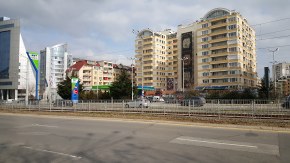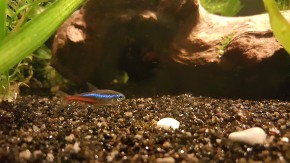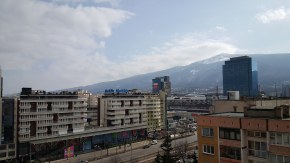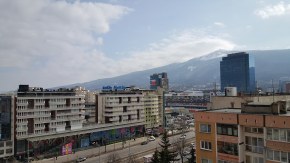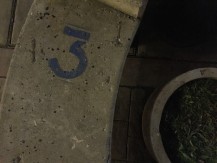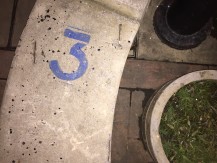Samsung Galaxy S6 review: Subject Zero
Subject Zero
Still camera
The camera on the Samsung Galaxy S6 borrows the 16MP Sony IMX240 sensor that the Galaxy Note 4 uses, but puts it behind a lens with a wider, f/1.9 aperture. This lets more light in and makes for much improved bokeh effects. The camera software is highly sophisticated too.

One of our favorite features is the quick launch - double press the Home key from anywhere in the UI and the camera pops up in less than a second.
The UI is pretty simple, most settings are available on the viewfinder. The selection changes as you go between the different shooting modes. You can download new shooting modes, but currently only Sports shot is available.
The mode that deserves the most attention is Pro mode. It lets you control the focus manually, adjust exposure compensation and ISO, white balance too. You can save the current manual settings into a preset for easy recall later.
The color adjustments are very advanced - you get several presets (like color effects), but you can make your own. There are sliders to boost shadows and reign in highlights, adjust the contrast and saturation, the temperature and tint. With these you can create Instagram-y filters or make the best of the camera's dynamic range.


Pro mode's sliders offer a live preview of your adjustments
In Auto mode casual users can skip tapping the HDR icon altogether. There's an auto HDR option so you don't have to turn it on and off each time.
There's also an automatic night mode that fights handshake in the dark. Several color effects are available with a few more in the download section.
Tracking autofocus automatically follows moving subjects, making sure they stay in focus. This can't be used in for 2160p video though.
Selective focus makes a comeback - it snaps two photos and then lets you chose near focus, far focus or everything in focus. The Galaxy S6 camera is quite good at macro shots and creates a great soft focus on its own, so with some experience you don't need this software trickery.



Selective focus: near focus • far focus • everything in focus
The software guesswork is not particularly accurate, so we tried some macro shots. The wide f/1.9 aperture creates a great lens bokeh in macro shots to begin with. The Selective focus mode lets you soften the background even further, but the quality doesn't do the camera justice.


Macro shots come out with a lovely bokeh, no software gimmicks needed
Virtual shot has been revamped. It now lets you pick an object and rotate the phone around it. After, the phone can use its motion sensors to replay the object, rotating it along with the phone as if it's still in front of the camera.


Virtual shot • camera settings
Galaxy S6 image quality
Samsung not only has changed the lens compared to the Galaxy Note 4, but has also fine tuned the image processing. As a result the Samsung Galaxy S6 photos look even better when observed at 1:1 magnification.
Detail is impressively sharp. Noise is kept in check, while processing artifacts from noise reduction are hard to spot, foliage in particular looks great. Software sharpening is moderate too, Samsung has been known to dial it up in the past. White balance is spot on even in tricky conditions and the color saturation has been brought even further down from the already toned down setting in the 2014 generation.
The dynamic range is quite wide and you can improve it further with HDR mode. It's very fast so you can just leave it on auto without slowing down the shot to shot time. The HDR mode has a light touch, brightening shadows and recovering highlights, but the changes might be too small for some.
The Samsung Galaxy S6 shoots panoramas with very high resolution - 3,200px tall if you hold the phone upright, 1,800px if you hold it on its side. The software and fast chipset make shooting very simple, you just start panning in one direction.
The resulting images are rich in detail and aside from the moving cars and the ledge that was too close, there are no major stitching artifacts.
The selfie camera can also take HDR photos (good when the sun is at your back) and can do Virtual shot. The wide selfie mode works kind of like a panorama - it stitches three photos for a wider field of view. You get instructions (e.g. tilt phone forward) to keep you on track.
The 5MP selfie camera is of pretty good quality and captures photos with plenty of detail and little noise. Color rendering is comparable to the main camera, slightly less saturated. It's a 4:3 camera though, unlike the 16:9 main camera.
You can enable Wide selfie to make a photo more suitable for widescreens. The stitching is as good as panoramas shot with the main camera.
Finally, Interval shot is a like a photo booth, snapping four shots with a few seconds between each.
Here's the Samsung Galaxy S6 in our Photo quality comparison tool, where you can pit it against its predecessor, the Galaxy S5, and the Galaxy Note 4. The Galaxy S6 camera is noticeably better than that of the Galaxy S5. As for the Note 4 - the jury is still out on this one. In certain cases it's the Galaxy Note 4 that comes out with the more detailed images, while in other - it's the Galaxy S6.
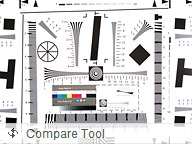


Samsung Galaxy S6 in our Photo comparison tool
Low light test shots: Galaxy S6 vs. iPhone 6
Update, March 16: By popular request from our readers, after the review was published, we took the time over the weekend to try the Galaxy S6 in low light shooting. We brought an iPhone 6 along for comparison this time around, but rest assured, we'll be bringing you a dedicated camera shootout between the Galaxy S6 and the Galaxy S5 and Galaxy Note 4 in the following days.
Our general hands-on impression is that the Galaxy S6 is better suited for low light shooting than the iPhone 6. The Samsung Galaxy S6 camera is higher-res to begin with. Its wider aperture allows more light to reach the sensor, while the built-in optical stabilization makes it easy to shoot at lower speeds than the iPhone 6. Noise performance of the two is about the same. The Galaxy S6 almost invariably picked a much pleasant white balance setting, and it produced more natural and generally, better looking colors, while the iPhone 6 tends to desaturate low light shots.
The only caveat in the excellent low light performance of the Galaxy S6 is the low shutter speeds that the camera picks - it's not uncommon to see it shoot with a shutter speed as low as 1/10s (not unlike the iPhone 6 Plus). The OIS certainly wards off camera shake from ruining the shots, but it won't be of any use if your subjects are moving - they would come out as blurry in this case.










Low light shootout: Galaxy S6 (left) vs. iPhone 6 (right)
The last camera sample is shot in almost pitch dark. The Galaxy S6 employed its Auto Night Mode, while the iPhone 6 went for ISO2000. Looking from up close, the Galaxy S6 again did much better here.


Pitch dark: Galaxy S6 (left) vs. iPhone 6 (right)
Here's a quick comparison of how the flash on the two devices operates in almost pitch dark. The scene is really dark to begin with, forcing the Galaxy S6 to activate its Auto Night mode. The iPhone 6 sensor sensitivity went as high as ISO2000 for this one. As far as resolved detail is concerned, the Galaxy S6 is much better.
When the LED flashes went off, the Galaxy S6 still retained the upper hand, producing a brighter, more detailed image, along with more natural white balance and colors, despite the iPhone 6 boasting a Dual Tone flash, which should supposedly help in such conditions.
Reader comments
- Joe
- 28 Jun 2023
- CGH
Indeed Samsung Galaxy S6 is specially designed and powerful. I bought mine February 2017, but for few weeks now it goes off frequently. I have to press the power, volume and home keys synmontanously to on it, now off. Pls help solve the problem. Than...
- Anonymous
- 18 Feb 2023
- XIa
How do you put off data




